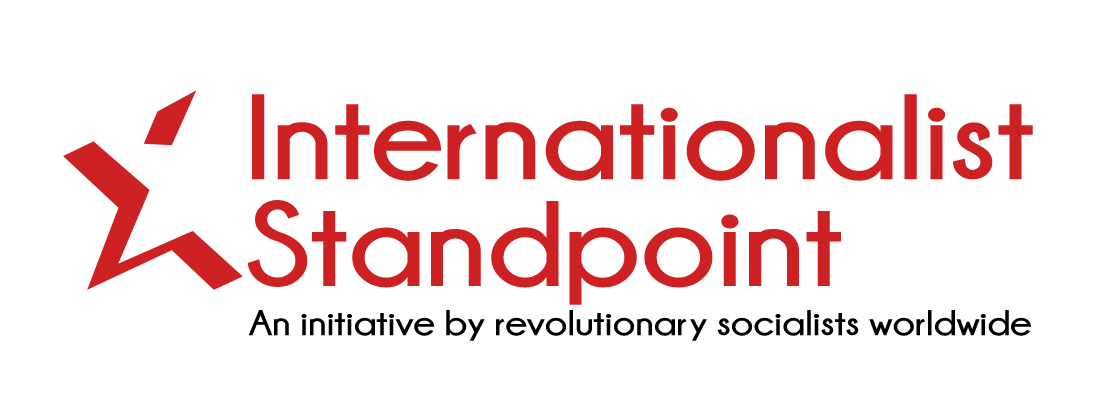By Redlight Lee, ISF Taiwan
At the end of 2024, South Korean President Yoon Suk-yeol of the People Power Party declared martial law under the pretext of a “threat from anti-government forces,” and attempted to dissolve the National Assembly, which was controlled by the liberal opposition Democratic Party of Korea. The public responded with fierce resistance, ultimately defeating the martial law and leading to Yoon’s impeachment. As a result, an early presidential election was called for June 3, in which Lee Jae-myung of the Democratic Party was elected.
This election was quite unique in South Korea’s political history, not only as an attempt to restore order after a reckless act of a power grab but also due to the worsening of pre-existing social contradictions during Yoon’s presidency. The anger triggered by the failed coup pushed voter turnout to 79.4%, the highest in 28 years. The election also showed a distribution of support for candidates similar to previous years—highly polarized—reflecting that unresolved societal divides. These conditions reveal a South Korea full of public outrage and overflowing pressure, both now and in the future.
Restoring Order After the Failed Coup
Yoon Suk-yeol’s coup attempt was not merely a reckless individual move—it reflected a major eruption of social contradictions under his rule.
Fundamentally, Yoon’s regime represented the interests of an alliance between conglomerates (chaebols) and conservative elites. He came to power in 2022 with only a 0.73% margin over the liberal opposition Democratic Party and saw his approval ratings plummet to as low as 17% during his term, exposing the fragility of the elite establishment’s political base.
Faced with a National Assembly where the opposition held 180 of 300 seats, and mired in multiple personal scandals, Yoon was not willing to step down peacefully via traditional political channels. Ultimately, he resorted to martial law to break the impasse. Its failure delivered a major blow to South Korea’s right-wing forces, which had long served the interests of the chaebols through the People Power Party and its allies.
The establishment Right’s failure to resolve societal contradictions became the Democratic Party’s political capital. Its candidate Lee Jae-myung defeated the People Power Party’s Kim Moon-soo with 49.42% of the vote to 41.15%. Lee’s campaign attracted grassroots support by declaring progressive policies such as universal basic income, expanded public housing, and a 4.5-day workweek. Compared to the 2022 election, where the Democratic Party narrowly lost by 0.73%, this year’s 8.27% lead reflects the public’s retaliatory judgment against the right-wing establishment.
However, this shift in election dynamics does not exclusively indicate a clear leftward turn among the public. The Reform Party—a third party in this election, which positioned itself ideologically close to the People Power Party, supported neoliberalism and opposed feminism. They attracted centrist young voters with promises of technological innovation and secured 8.34% of the vote. Founded only last year, its voter base likely includes conservative voters disillusioned by Yoon’s failures.
If we group the Reform Party and the People Power Party together as South Korea’s “mainstream right,” their combined support reaches 49.49%, almost equal to the Democratic Party’s 49.42%. This indicates that Lee Jae-myung’s victory was not due to a collapse in public trust in the right as a political space, but rather a result of fragmentation among conservative voters due to the downfall of the PPP and Yoon’s coup attempt.
What Does the Distribution of Voter Support Reveal?
In this election, Lee Jae-myung secured over 70% support among voters aged 40–59, South Korea’s core working population. In contrast, Kim Moon-soo’s support in this group was under 25%.
This age group accounts for 44.8% of South Korea’s workforce and over 50% of its manufacturing labor force. Tariff hikes by the U.S.—25% on automobiles and 50% on steel—directly threaten their job security, making them highly sensitive to policy changes.
Combined with South Korea’s strong tradition of labor movements, Yoon’s coup attempt seriously offended the democratic consciousness of the working class. The wave of anti-Yoon strikes during and after the failed coup was a direct expression of this dissatisfaction.
All these factors led to broader support among core labor groups for Lee Jae-myung’s progressive policies and rejection of Kim Moon-soo’s pro-business agenda.
However, among the younger demographic aged 20–39, the combined support for the “mainstream right” exceeded 50%, revealing a generational divide in political views between the youth and the older working class.
According to the Korean Statistical Information Service, at the end of 2023, South Korea had 3.873 million people in part-time or irregular employment (working fewer than 36 hours a week with no fixed hours), the highest since 2003. Among them, 737,000—about 19%—were in their 20s.
Under neoliberal policies, South Korean labor conditions are harsh, with working hours and industrial accident rates far above the OECD average. This has led many young people to become increasingly pessimistic about stable employment, pushed towards flexible, irregular work or abandoning the job market altogether, becoming NEETs (Not in Education, Employment, or Training) who depend on their parents. Consequently, the younger generation finds it difficult to connect with traditional labor unions, deepening the generational gap and aging of labor movements. In the age of social media, where far-right, hate-filled rhetoric flourishes and a strong leftist alternative is absent, some young people end up aligning with the Right, blaming women or immigrants for their plight instead of the ruling class.
South Korea’s youth show a clear gender gap in their rightward tendencies. Among voters in their 20s, 74.1% of men supported the “mainstream right” (36.9% for the People Power Party and 37.2% for the Reform Party), while only 35.6% of women did (25.3% and 10.3%, respectively). In an environment of harsh labor conditions, pessimism about the future, and rampant Far-right discourse, many young South Korean men blame women for their suffering. A survey conducted a year before Yoon’s election showed that 79% of men in their 20s believed they faced serious gender discrimination. During Yoon’s presidency, further attacks on women’s rights—such as denying the existence of gender discrimination and attempting to abolish the Ministry of Gender Equality and Family—only worsened the problem.
Lee Jae-myung and South Korea’s Social Contradictions
As mentioned, Lee Jae-myung campaigned on progressive policies such as universal basic income and expanded public housing to address social contradictions and attract grassroots voters. He also promised to expand health care coverage for women undergoing abortions and suggested other feminist policies.
But grassroots people should not trust Lee to be the “savior” who will address South Korea’s core social contradictions. Some of his other campaign promises were conservative, such as raising the retirement age—as a response to South Korea’s declining birthrate. This reveals that the Democratic Party does not sincerely aim to solve fundamental problems but instead intends to maintain the status quo, placing the burden on the working class.
Lee’s stance on gender issues is also hypocritical. Among other things, he shared a misogynistic article on social media criticizing the Moon Jae-in administration’s “feminism-first policies” in an attempt to win support from anti-feminist demographics.
Most importantly, the Democratic Party still refuses to confront the core issue of South Korea’s oligarchy. Conglomerates (chaebols) like Samsung and LG control over half of the country’s total sales and dominate key industries like semiconductors. They monopolize profits, forcing ordinary people to scramble for scraps for the pipedream of class mobility.
These chaebols hoard most of South Korea’s wealth and can even plunder national savings with government support. If overwork, low birth rates, and misogyny are to be resolved, the chaebols must be nationalised. Yet, despite Lee’s bold criticisms of the chaebol system in the past, he made no mention of them in this election.
All of this shows Lee Jae-myung’s government capitalist nature. Democratic Party is merely the other side of the same coin as People Power Party’s right-wing populism—representing the populist wing of South Korea’s bourgeois progressives. Ultimately, he cannot meet working people’s demands and can only cultivate a progressive image with limited policies to gain votes and mitigate social unrest.
A Bleak Future: Where Is the Way Out?
Although South Korea’s progressive camp achieved a temporary electoral victory this time, its incompetence and hypocrisy still signal that the future of South Korean capitalism will remain under immense pressure. This system will continue to erode any prospects for a dignified life for the majority.
As the Trump administration imposes tariff pressures worldwide, South Korean conglomerates are likely to respond by relocating key industries abroad, further worsening domestic economic conditions and employment opportunities. This will plunge the South Korean people into even greater hardship.
During the martial law crisis, workers used strikes and protests in the National Assembly to put an end to Yoon Suk-yeol’s coup. Today, Lee Jae-myung’s compromising administration is destined to become the fuel for the next eruption of class conflict. To reverse the current trajectory, the South Korean working class must draw upon its rich traditions of labor struggle to wage a fight against the chaebols (conglomerates). This struggle must not only address typical economic demands of workers, but also connect with other oppressed groups and raise social issues—such as gender equality, low birth rates, and generational disconnects—and bring these demands into the broader working class agenda.
This requires an independent left-wing force to help organise the masses so they can come out of the fog of populism and hate politics, and to organize a coalition of struggle that spans generations, genders, and industries. Only when a 60-year-old shipyard worker and a 20-year-old gig worker unite around demands such as opposing the extension of the retirement age and securing protections for informal workers, can the capitalist “Hell Joseon” (Hell Korea) that exploits the grassroots be overturned—and in its place, a genuine socialist paradise built by and for the people be established.



